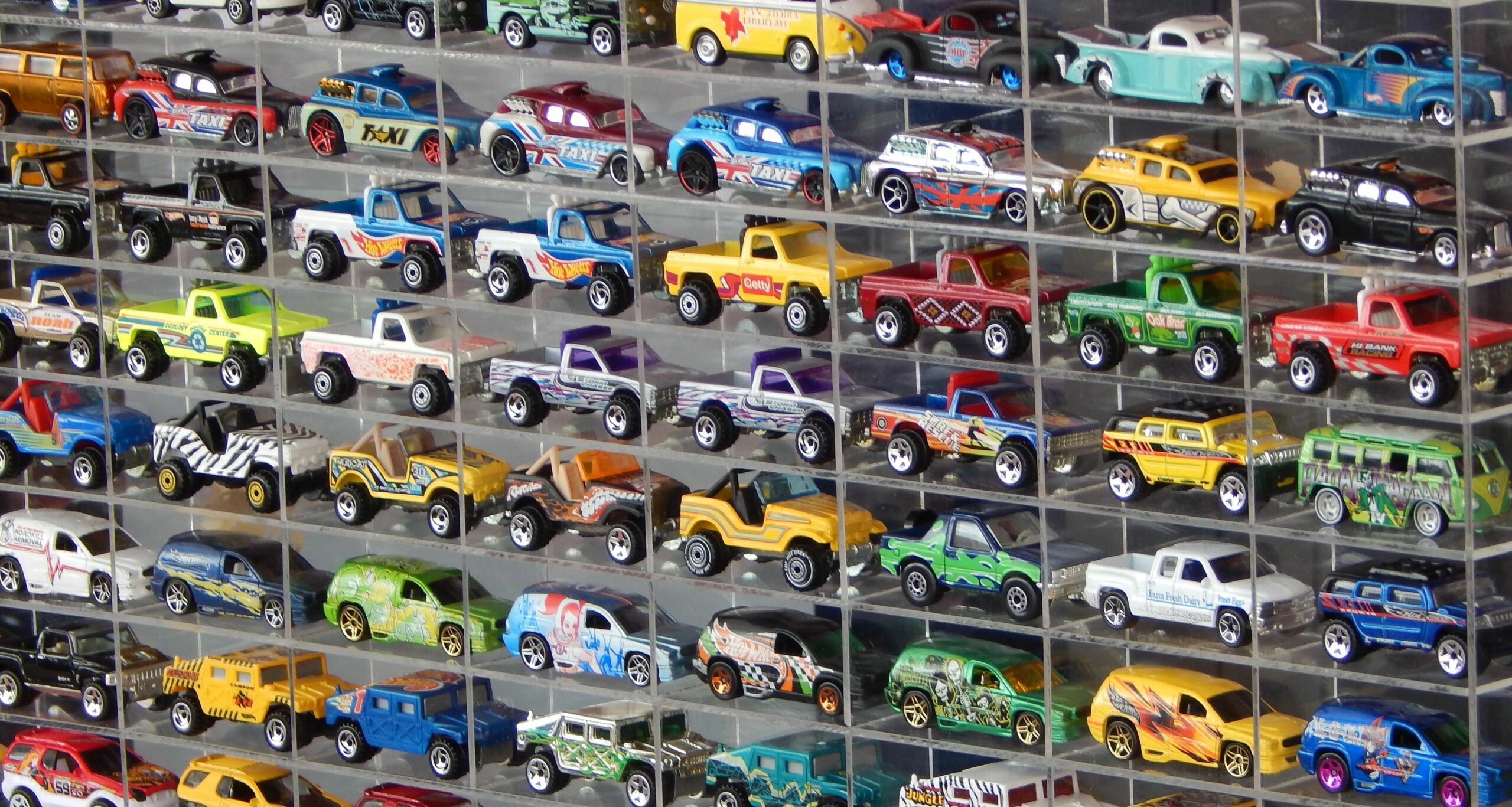
Aisyaqilumar/Depositphotos.com
September 1, 2025
How Much Will the Toy Retail Segment Rely on ‘Kidult’ Consumers in the Future?
When one thinks of the toy aisle at any major retailer, most might imagine shelves stocked with items appealing to younger consumers, particularly children and pre-teens.
The reality of the situation appears to be, however, that the toys and collectibles segment has been pivoting to serve the desires of so-called “kidult” shoppers, oftentimes (but not exclusively) defined as those over the age of 18. Others peg that age at 12 and over.
According to a 2024 New York Post report citing Circana data, in the first half of that year, toy collectors aged 18 and older drove more demand than preschoolers did for the first time ever. “Kidults” racked up $1.5 billion in toy sales spanning January through April of 2024.
“The reality is that most kids today are not connecting with physical toys the way previous generations did,” toy influencer Dan Larson told the outlet.
And as VMSD noted, pulling more recent Circana data from this year, the broader demographic definition of the “kidult” cohort was responsible for driving a turnaround in the toys and collectibles retail segment — sales across G12 countries rose by 7% from January through June of 2025, to $27.5 billion, versus the year prior. Toy sales had weakened in 2023 (versus 2022’s figures) by 8%, and in 2024, sales were down 1% as of April of that year.
“I have been following the toy market for many years and cannot recall the last time all countries Circana tracks were growing at the same time,” said Circana’s global toys industry advisor Frédérique Tutt. “The surge in sales can largely be attributed to consumers aged over 12-years-old, who have shown unprecedented growth and are consistently outperforming traditional kids’ trends.”
Why Are ‘Kidult’ Shoppers Buying? And Will They Continue To Do So?
A variety of reasons have been posited as to the motivations behind the rise of the “kidult” toy consumer, from feelings of nostalgia or belonging to tactile distraction to preferred home decor.
On the nostalgia front, Juli Lennett — VP and toys industry advisor for Circana — suggested that adults were reconnecting with childhood via the purchase of toys, particularly given the difficulties of the post-pandemic economy.
“Ever since the pandemic, the adult market for toys has been the growth area for the toy industry,” Lennett said, per MarketingBrew. “When there are times of stress, which it feels like we’re getting into that even now, consumers do tend to lean into when they were children and lean into toys.”
Belonging to a larger community of collectors and aficionados can also be a powerful spending motivator for this cohort, as Lennett continued.
“[Engaging with toy culture] kind of makes you feel good, and you’re part of a bigger group. It’s social media–driven. You feel okay doing it, and you’re going to promote it,” she said.
Regarding Pop Mart’s Labubu in particular, this year’s hottest toy, despite the cutesy-evil appearance of the character lineup, the product itself is targeting Gen Z “kidults,” rather than younger children.
“The target audience for our product is the adult collector,” Emily Brough, Pop Mart’s head of licensing, told The Wall Street Journal. “We are specifically hitting that Gen Z kidult customer, so they’re more collectible items than anything else, and so they’re definitely not marketed for children.”
As Financial Times columnist Anjli Raval suggested, the appeal could come as part of the “displayability” of the products in terms of acting as conversation pieces or home decor staples, or in the thrill of the chase in landing a highly prized rarity (perhaps even to sell at a profit to other collectors). And when it comes to tactile engagement — say, via the building of a larger LEGO set — toys can offer a physical way to channel focus, reducing an overload of screen time.
Tariffs Still a Cause for Concern for US Toy Retailers
It’s not all sunny news for the toy business, though. Tutt made the case for caution regarding the toy segment’s upcoming holiday season as tariffs continue to play out.
“The toy market is in healthy shape, with solid demand for toys and games; however, as an industry we must remain vigilant of the uncertainties surrounding U.S. tariffs and their impact on pricing and supply chains,” said Tutt.
“As the second half of the year accounts for over 60% of annual toy sales, the industry has reason to be optimistic about continued growth, but must also remain cautious and strategic as the holiday season draws near,” Tutt concluded.
Discussion Questions
Will the rise of the ‘kidult’ toy consumer continue to increase in influence (and spend) over the next few years? Why or why not? Will the trend eventually abate, or is the nature of the toy business fundamentally changing?
Are physical toys, themselves, becoming something of a nostalgia product as electronic forms of entertainment, play, or distraction become commonplace in U.S. households?
Poll
BrainTrust
Lucille DeHart
Principal, MKT Marketing Services/Columbus Consulting
Mohamed Amer, PhD
CEO & Strategic Board Advisor, Strategy Doctor
Cathy Hotka
Principal, Cathy Hotka & Associates
Recent Discussions








The adult toy segment has grown rapidly, and it is now a significant proportion of overall toy revenue. The industry needs to sustain this to remain healthy, especially as the toy market for kids remains under pressure. The good news, at least from our data, is that adults continue to be very interested in toys, especially in mindful segments like crafts, building (which is dominated by Lego), and board games. Collectibles is another area of continued growth.
Definitely. It’s the “lipstick rule”…when times are tough, people will invest in small splurges.
I would question whether adults really buy “toys”. The article mentioned collectibles, but that’s not the same thing: toys emphasize things like play value, durabilty and in more recent times perhaps safety; collectibles concentrate on fidelity (to prototype) and uniqueness. Price is usually quite important for toys, much less so for collectibles. My advice is to rephrase the question…short of doing that, my answer is “no”.
Adults certainly buy Lego. But they mostly buy the adult kits, which Lego deliberately creates for the mature market.
LEGO is definitely hard to categorize; so , for that matter are any number of other “toys” – Chevron cars, anyone ? – that start out as cheap disposables and catch on. Still l Ithink it’s a useful dichotomy: even if it’s techically speaking a continuous spectrum, there’s a middle ground that has few occupants.
Physical toys offer tactile and multi-sensory experiences that go beyond what electronic forms of play can provide. For adults, these toys deliver a dose of nostalgia and a welcome distraction from today’s fast-paced world. This is achieved through a combination of tangible value, simple rules, emotional comfort, and a sense of psychological control. Ultimately, the adult physical toy market provides significant benefits, from nostalgic fulfillment to enhanced emotional well-being.
Bottom line, retailers can’t dismiss “kidult” or the attraction of the physical toy market.
In a highly digitized world, physical toys requiring in-person engagement is not a format for long-term success. Rather, toy companies need to innovate and create more multi-plane toys. Webkinz was well ahead of its time when they sold plush animals with access to a virtual world to socialize with other Webkinz owners. In the adult world, brands like Peloton embraced a similar approach to digital access through physical products. The industry should not rely on adult toy consumption, they should evolve to build assortments that cater to the changing youth market.
I love the multiple references to Lego. It’s amazing how Lego has evolved over the decades, and it’s amazing how Lego can grow in its utilization from the early years on up. I’ve watched my grandson start at an early age just pondering basic shapes. Now he’s building Star Wars space ships and oil tankers. And watches YouTube videos of adults making projects involving thousands of pieces. So it seems like toys become hobbies which can become vocations. Toys that provide constant, ongoing, evolving ‘learning moments’ can definitely age into adulthood.
From my experience in retail buying and merchandising, the rise of ‘kidult’ consumers is reshaping the toy industry in a significant way. Adults are increasingly purchasing toys for nostalgia, collection, and as statement pieces for their homes. Retailers must move beyond traditional age-based segmentation and create curated zones with limited editions and pop culture collaborations. This evolution also requires sharper planning — focusing on premium, low-volume items and faster response to collector demand. The real opportunity lies in balancing this growing adult segment while keeping the core children’s category vibrant.
“Kidult” consumers are becoming a growing part of the toy market. Adults are buying for nostalgia, collecting, or just for fun, and many have disposable income to spend on themselves because they’re waiting longer to make bigger life purchases like buying a home or starting a family. Retailers overlooking this group are missing a big opportunity to tap into a new segment of shoppers.
The pandemic drove kids to Roblox and TikTok to stay social, and drove adults to toys for nostalgia and fandom. From The Mandalorian to Rick and Morty, many adult toys are fuelled by popular shows. The ‘kidult’ market will continue to grow as adults seek escapism, fun and comfort during this erratic decade.
Kidult demand is real, and it has given the toy industry a much-needed boost. But it should be seen as both an opportunity and a caution. Relying too heavily on adult nostalgia may create short bursts of growth without long-term stability.
The real opportunity is to use this trend to rethink toys for the future. Brands can combine play, collectibility, and digital experiences, and they can appeal to both kids and adults. Without that balance, the industry could become too dependent on adult buyers alone.